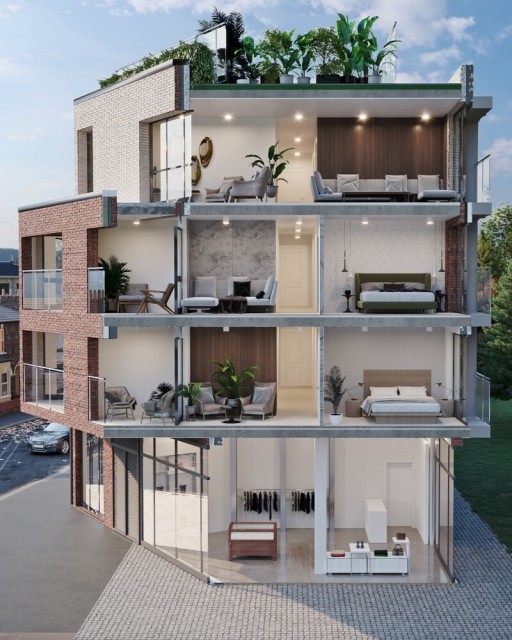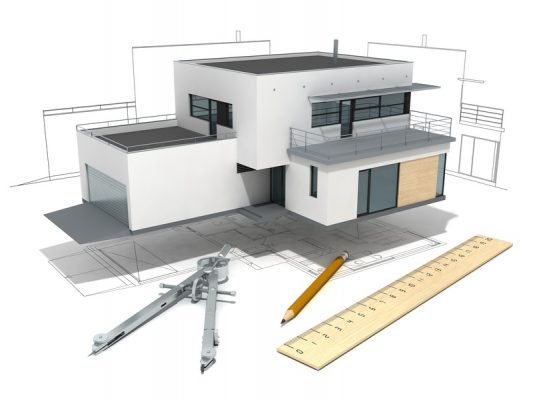Find the Best Residential Architects for Modern and Sustainable Home Designs
Find the Best Residential Architects for Modern and Sustainable Home Designs
Blog Article
Leading Patterns in Residential Design You Ought To Learn About
As domestic architecture proceeds to evolve, several compelling trends are forming the way we develop and occupy our living rooms. Key advancements such as lasting building techniques, the combination of wise home innovation, and the increase of modular homes emphasize a considerable shift towards both performance and ecological obligation.
Lasting Building Practices
An enhancing variety of domestic tasks are accepting sustainable structure practices, driven by an expanding understanding of environmental impact and energy efficiency. This change is identified by the integration of green materials, energy-efficient designs, and ingenious construction methods. Builders and house owners are increasingly prioritizing using renewable energies, such as bamboo and recycled metals, which not only minimize the carbon footprint yet likewise boost the toughness and aesthetic allure of residential or commercial properties.
Incorporating energy-efficient systems is an additional important aspect of sustainable building - residential house architect. Features such as high-performance insulation, energy-efficient windows, and solar panels are coming to be requirement in new property designs. These elements not only add to lower power usage but likewise offer considerable lasting cost savings for property owners
Moreover, the layout of sustainable homes usually emphasizes natural light and air flow, lowering the reliance on fabricated illumination and climate control systems. Landscaping practices, such as xeriscaping, additional advertise sustainability by reducing water usage.
As the need for lasting living solutions remains to rise, the property style sector is positioned to adjust and innovate, ensuring that future homes are not just ecologically responsible however practical and additionally comfortable for their passengers. - residential house architect
Smart Home Technology
Smart home modern technology is transforming the way house owners connect with their home, boosting comfort, power, and security management. This innovative strategy integrates different devices and systems, permitting individuals to manage their homes from another location or with automated processes. Central to this pattern is using wise devices such as thermostats, illumination, protection cameras, and home appliances, all connected using the Web of Things (IoT)
Among the most appealing attributes of clever home technology is the capability to personalize setups for optimum power effectiveness. House owners can keep an eye on energy use and change illumination, cooling, and home heating based upon their routines, dramatically minimizing utility expenses. Innovative safety and security systems furnished with clever locks and security cams supply tranquility of mind, enabling remote monitoring and alerts to potential security breaches.
Integration with voice-activated assistants enhances individual experience, allowing property owners to control devices with simple voice commands. As technology proceeds to progress, the potential for wise home systems to improve lifestyle expands, making them an important factor to consider in modern-day domestic architecture. Inevitably, wise home modern technology is not just a pattern but an essential shift toward a lot more smart living atmospheres.
Open Principle Living
Open up idea living has actually become a specifying function in contemporary property design, identified by the elimination of traditional obstacles in between rooms. This design viewpoint promotes fluidity and connection within the home, enabling a smooth shift in between areas such as the kitchen area, dining, and living important site areas. By removing walls and dividings, open concept formats create a feeling of space, promoting an inviting ambience that enhances social communication.

Moreover, this strategy to residential layout lines up with minimalism, concentrating on practical simpleness and aesthetic comprehensibility. Homeowners appreciate the versatility of these layouts, which can be easily adapted to reflect personal style through furnishings plan and style. As open concept living remains to get grip, it remains a testament to advancing family dynamics and the need for homes that boost connection and convenience.
Biophilic Layout
Biophilic style has come to be significantly substantial in domestic style, emphasizing the innate link between people and nature. This style viewpoint looks for to incorporate natural components into living rooms, thereby promoting a sense of health and boosting the high quality of life for passengers. By including features such as all-natural light, vegetation, and natural materials, biophilic style promotes an unified relationship in between indoor environments and the all-natural world.
Crucial element of biophilic design consist of big windows that use this link give unhampered views of exterior landscapes, living walls that present greenery right into interiors, and open flooring plans that encourage air flow and natural light infiltration. Water functions, both inside and outside the home, serve to create calming environments and enhance sensory experiences.
Furthermore, the use of lasting materials not just supports environmental stewardship however also contributes to much healthier interior air top quality. As understanding of environmental problems increases, house owners are significantly focusing on layouts that reflect their link to nature. In essence, biophilic layout not just elevates visual allure but also addresses emotional and emotional demands, making it a crucial trend in modern residential architecture.
Modular and Prefab Houses

Moreover, modular and prefab homes are developed with sustainability in mind. Many manufacturers use energy-efficient systems and environmentally friendly materials, such as photovoltaic panels and advanced insulation strategies, adding to reduced energy consumption and reduced energy bills for house owners. The adaptability of layout choices permits for customization, dealing with diverse practical needs and aesthetic preferences.
As the demand for budget friendly real estate remains to increase, prefab and modular homes offer a see it here feasible remedy, dealing with both economic and environmental challenges. Areas are increasingly identifying the capacity of these frameworks, integrating them right into country and city setups. In general, the fad toward modular and prefab homes symbolizes a change towards extra sustainable, efficient, and versatile living settings, making them an essential facet of contemporary residential design.
Final Thought
Lasting structure methods and wise home modern technologies improve efficiency and convenience, while open concept living and biophilic style foster social interaction and a link to nature. The surge of prefab and modular homes uses adjustable and cost effective options, mirroring a wider shift towards functional and accountable living.
Secret advancements such as sustainable structure techniques, the combination of wise home technology, and the rise of modular homes emphasize a considerable change towards both capability and ecological obligation.The increase of modular and prefab homes has actually changed the property architecture landscape, using cutting-edge remedies for effective and sustainable living.In addition, prefab and modular homes are designed with sustainability in mind. On the whole, the fad towards modular and prefab homes signifies a change toward more sustainable, reliable, and adaptable living environments, making them a critical element of modern residential design.
Sustainable building techniques and clever home modern technologies improve effectiveness and convenience, while open principle living and biophilic layout foster social interaction and a connection to nature.
Report this page